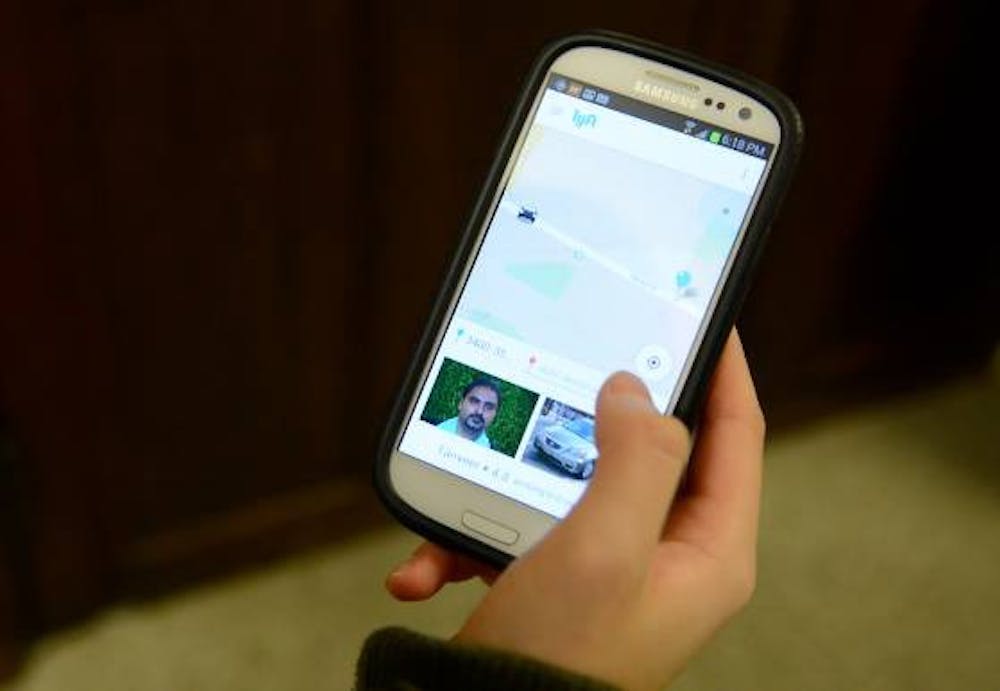Want to get from A to B and enjoy the ride, without sacrificing affordability? While Lyft claims to be "your friend with a car, whenever you need one," Philadelphia authorities disagree.
Lyft launched in Philadelphia on Jan 30. Despite the Philadelphia Parking Authority’s ban on UberX and Lyft, the ridesharing services continue to operate successfully in the city and remain popular among Penn students.
While Pennsylvania has given Uber and Lyft a temporary license to operate in the rest of the state, Philadelphia is the lone exception. The PPA vows to impound all of the Lyft and UberX cars it can find, and has recently been conducting sting operations to do so. If caught, drivers receive a citation and a $1,000 fine, and the company is cited twice with fines totaling over $1,750, though there are no consequences for the passengers.
Lyft representatives reached out to the PPA months before launching in Philadelphia in an effort to collaborate on ridesharing regulations. While the City Council has unanimously passed a resolution urging the state to craft regulatory framework for ridesharing, the PPA has continued to enforce its ban.
“They’re very much trying to force Lyft into a one-size-fits-all regulatory framework,” Lyft representative Mary Caroline Pruitt said. “Current regulations for taxis and limos were created a while ago before anything like Lyft was ever imagined … this is a fundamentally different model than a taxi or a limo.”
Nevertheless, Pruitt added that the company feels its launch in Philadelphia was successful.
“Our launch in Philly was actually one of our biggest and busiest launches ever. We’re really excited to see both passengers and drivers very much enjoying the service,” Pruitt said. “I think people choose Lyft because of the experience … We very much believe that the ride should be a delightful, fun, enjoyable, welcoming experience.”
Lyft encourages passengers to sit in the front seat and get to know their driver. The company believes that conversation between passengers and drivers enhances the ridesharing experience.
Lyft drivers, like their UberX counterparts, are not professional drivers, but small business owners, students and single moms, among others who drive in their free time.
The PPA refers to UberX and Lyft as illegal and “hack” taxi services. According to the PPA, these part-time drivers undergo less thorough background checks, vehicle inspectionsand training programs than Philadelphia taxi drivers.
Pruitt disagreed. “We’re very proud of the rigorous safety training processes the drivers undergo before being approved to drive on the platform,” she said. The screening process includes a criminal background check, a DMV record check, a 19-point vehicle inspection and an in-person meeting with a “mentor driver.” To qualify, mentor drivers must earn a five-star rating, receive impeccable feedback from the passenger communityand complete corporate training.
“Our safety practices work in a way that is streamlined for the driver. It still maintains the highest level of safety, but at the same time puts the burden on us as the company … with very little requirements in terms of time or money on the driver’s part,” Pruitt said. This system benefits drivers who have other full-time occupations.
UberX and Lyft passengers at Penn expressed little concern over the alleged safety issues of ridesharing. Engineering freshman Bernardo Penteadosaid he has never felt unsafe in an UberX and has even used the service to take extended rides, such as to his recent skiing trip.
“I feel fine. I feel safe, and it’s just the easiest way for me. I feel [Uber drivers] drive better and safer, as well,” Wharton freshman Sam Shea said. Shea added that she can never find a taxicab when she needs one.
Students often findridesharing to be much more convenient than taxicabs, which they have claimed are very difficult to find on certain streets near Penn’s campus. Ridesharing passengers are able to see their driver's exact location, as well as their name, photo, rating and license plate number before the car arrives. The five star rating system allows passengers to rate their drivers after each ride, and to report any dangerous or unpleasant behavior.
“Ridesharing is inherently you putting your life in someone else’s hands. I personally like knowing who that person is beforehand,” Wharton and Engineering Junior Adam Stravitz said. “You’re able to get a general sense of who your driver is, and there’s a system of checks and balances in place for him, so that he’s incentivized to not scream profanities or text and drive.”
“Even though it’s less legal, I feel safer,” Engineering and Wharton freshman Zane Stiles said. “The Uber and the Lyft cars both are generally very nice compared to a taxi, which is usually beaten down.”
UberX and Lyft offer cheaper prices than taxis and public transportation. UberX, which recently dropped fares in the city by 35 percent, is now 55 percent cheaper than a Philadelphia taxi. Last week, Stravitz and a group of friends travelled downtown for only $8.64, which they split evenly using Uber’s built-in fare sharing feature. SEPTA cash fare would have totaled $9.00 for four passengers.
“It makes it very difficult to justify why you would ever take SEPTA if you’re in a group of one or two other people,” Stravitz said.
Lyft offers similar rates, and since its launch in Philadelphia has been running a promotion that allows pioneer customers to collect over 20 free rides.



